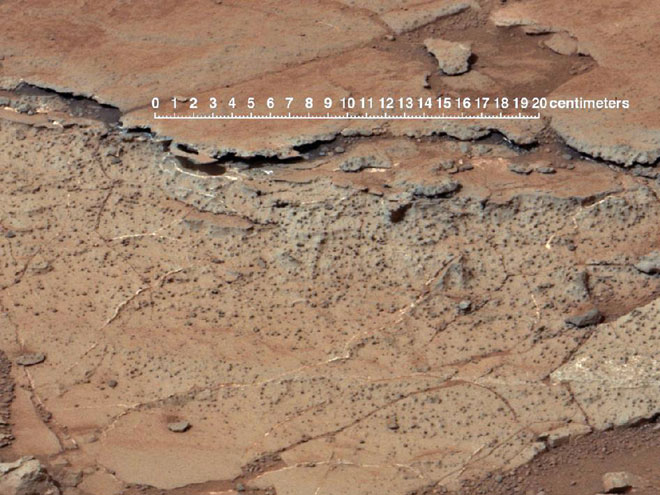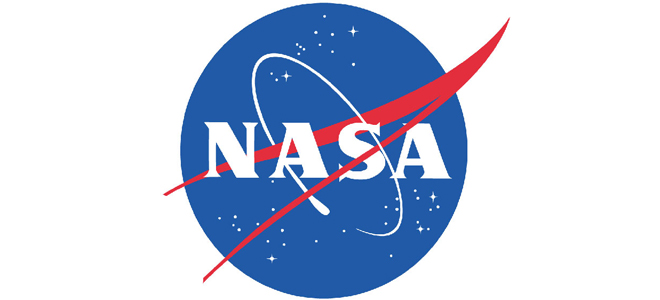
Rover image from Gale Crater reveals soil features similar to paleosols on Earth. Photo: University of Oregon.
WASHINGTON (PTI): Images and data captured by the Mars rover Curiosity suggest that the Red planet would have been warmer and wetter some 3.7 billion years ago, scientists say.
Soil deep in a crater dating to some 3.7 billion years ago contains evidence that Mars was once much warmer and wetter, said University of Oregon geologist Gregory Retallack.
NASA rovers have shown Martian landscapes littered with loose rocks from impacts or layered by catastrophic floods, rather than the smooth contours of soils that soften landscapes on Earth.
However, recent images from Curiosity from the impact Gale Crater, Retallack said, show Earth-like soil profiles with cracked surfaces lined with sulfate, ellipsoidal hollows and concentrations of sulfate comparable with soils in Antarctic Dry Valleys and Chile's Atacama Desert.
Retallack studied mineral and chemical data published by researchers closely tied with the Curiosity mission.
"The pictures were the first clue, but then all the data really nailed it," Retallack said.
"The new data show clear chemical weathering trends, and clay accumulation at the expense of the mineral olivine, as expected in soils on Earth. Phosphorus depletion within the profiles is especially tantalising, because it attributed to microbial activity on Earth," Retallack said.
The ancient soils, he said, do not prove that Mars once contained life, but they do add to growing evidence that an early wetter and warmer Mars was more habitable than the planet has been in the past 3 billion years.
Curiosity rover is now exploring topographically higher and geologically younger layers within the crater, where the soils appear less conducive to life. For a record of older life and soils on Mars, Retallack said, new missions will be needed to explore older and more clayey terrains.
Surface cracks in the deeply buried soils suggest typical soil clods. Vesicular hollows, or rounded holes, and sulfate concentrations, he said, are both features of desert soils on Earth.
"None of these features is seen in younger surface soils of Mars. The exploration of Mars, like that of other planetary bodies, commonly turns up unexpected discoveries, but it is equally unexpected to discover such familiar ground," Retallack said.
The newly discovered soils provide more benign and habitable soil conditions than known before on Mars. Their dating to 3.7 billion years ago, he noted, puts them into a time of transition from "an early benign water cycle on Mars to the acidic and arid Mars of today."
The finding was published in the journal Geology.
 Previous Article
Previous Article Next Article
Next Article











The Indian Air Force, in its flight trials evaluation report submitted before the Defence Ministry l..
view articleAn insight into the Medium Multi-Role Combat Aircraft competition...
view articleSky enthusiasts can now spot the International Space Station (ISS) commanded by Indian-American astr..
view article